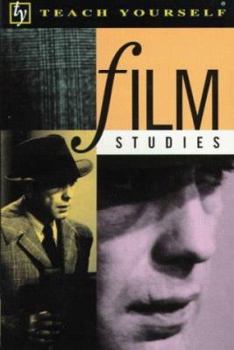Film Studies
Select Format
Select Condition 
Book Overview
Is this the right book for me? An unpretentious guide for all those who want to learn to analyse, understand and evaluate films Understand Film Studies provides an overview of the key areas in film... This description may be from another edition of this product.
Format:Paperback
Language:English
ISBN:0844202304
ISBN13:9780844202303
Release Date:January 1998
Publisher:NTC/Contemporary Publishing Company
Length:162 Pages
Weight:0.45 lbs.
Dimensions:0.5" x 5.1" x 7.8"
Customer Reviews
3 ratings
A quick way to understand structure, genres and reviews using available examples.
Published by Thriftbooks.com User , 14 years ago
Buckland starts with the basic of aesthetics and techniques of long take, deep focus and montage. He next tackles film structure and narration, and has an extended section on the narration of the confusing Mulholland Dr, so readers will want to watch that movie before reading that section (or while reading it). Looking at the director as artist with examples of Alfred Hitchcock, Wim Wenders, and Kathryn Bigelow. Perhaps the section on film genres was limited, with discussion only of "fallen women films", film noir, and 1950's science fiction. Readers may want to watch on the Michael Moore films (Jack and Me, or Bowling for Columbine) before reading the section on non-fiction films. Finally viewers of Spiderman 3, will appreciate 4 different reviews on the final chapter on "reception of film". My understanding of the review process is much better now, and I think my viewing of movies will be richer, and slightly different after reading this book.
How to watch movies like a pro
Published by Thriftbooks.com User , 15 years ago
We all go to the movies, and some of us read the reviews in the magazines and newspapers, or watch reviews on TV. if you're like me, you've sometimes wondered why a movie you liked didn't get a good review, or more interestingly, a movie you didn't like got a rave review. What up? Why? Isn't a movie just a movie? Well, no. Movies are a lot of things to a lot of people: a way to make a living for some, a place in out of the cold for some, art for some. Some movies we all sleep through, others keep us on the edge of our seats. Others have scenes we still remember after so many years, like the shower scene in Psycho, where Janet Leigh "gets it", at Bates Motel. I think the answer is, the many of the people who make movies are very smart, are very well versed in literature, art, sculpture, music, history. As such, the movies they make or star in often seem to be a melding or conglomeration of "all of the above". Often, unless we're very alert, these things go over or past our head, and we don't consciously even notice them, but they sink in, and stay with us. So what should we be looking for, and how can we recognize it? One place to start is to begin thinking like a screenwriter, or a director, or an actor. This little book is a great start on how to do that. Some chapter headings: Film Aesthetics: Formalism and Realism; Why is the music the way it is? What emotions is it evoking in us? Why afre close-ups used? Why long shots? Why is the camera moving? What is it trying to tell us? Film Structure: Narrative and Narration: whose perspective and point of view is the camera taking? Why? How much of the plot doe we know, as opposed to the principal characters? Film Authorship: the Director as auteur: Which is more important: the script or how it's interpreted into voice inflections, emotions and body language? Were there phases, or periods, movies went through, and what does that mean to us today? Film Genres: Defining the Typical Film. This is sort of like putting numbers on the backs of the players: we expect a certain "structure" in a western, that we wouldn't expect it a slapstick farce or in a WW II based spy thriller. Well, what are the basic structures? the No-Fiction film: Five Types of Documentary. Do you feel a bit uncomfortable watching a Michael Moore documentary? WE often forget that in addition to Mr. Moore, there is a camera person, probably an audio person, most likely a director, all there but out of sight. What might that tell us about what we see on the eleven o'clock "news"? I have a small library of books on film studies and film criticism. However, if I could only have one, this book would be it. If you go to the movies for anything other than a warm place out of the cold, or to eat popcorn in a darkened room, get this book. It will make your movie watching infinitely more interesting.
"one is lost in admiration of the author's skill..."
Published by Thriftbooks.com User , 23 years ago
"Most beginners' guides of this sort fail miserably to fulfil (sic) their brief, being written by uncompromising ideologues who refuse to concede anything to the needs of the general reader. Buckland's pocket-sized volume represents a breakthrough: it's genuinely pitched at novices and succeeds in maintaining a perfect balance between clarity and intellectual complexity. One is lost in admiration of the author's skill at reducing the major issues and approaches to a scale exactly calibrated for undergraduate seminar discussion without the least hint of condescension in tone. The format of efficient bullet-pointing and succinct case studies can be freely cribbed from in planning lessons for years to come. (PM)" -- from Sight & Sound, a British film magazine





